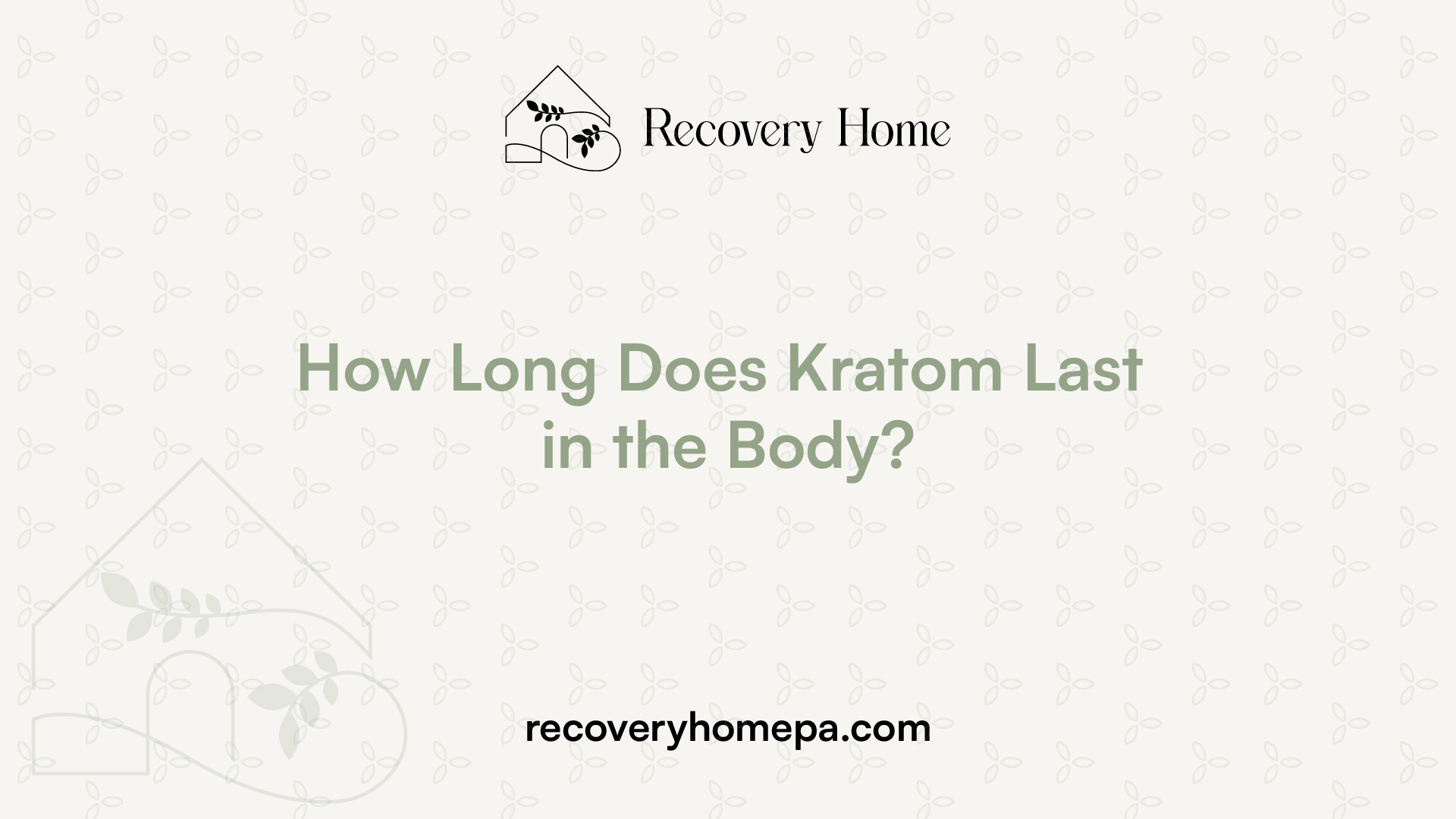Understanding Kratom Effects
When it comes to understanding the effects of kratom, it’s important to consider both the onset and duration of these effects.

Onset of Kratom Effects
The onset of kratom effects typically occurs within 10 to 30 minutes after ingestion, although some users may experience effects as quickly as 5 minutes, while others may take closer to the 30-minute mark. The timing can vary depending on factors such as strain, potency, and individual body chemistry [1]. It’s worth noting that kratom works faster when taken on an empty stomach, as food can delay the absorption process.
Duration of Kratom Effects
The duration of kratom effects is influenced by several factors, including the dosage consumed, individual metabolic rate, and the amount consumed. Typically, the effects of kratom last anywhere from two to six hours. However, individual experiences may vary. Some users may experience effects lasting around two hours at low to moderate doses, while others may experience effects lasting up to five to seven hours at higher doses. It’s important to note that the duration of kratom effects can also be influenced by factors such as strain, tolerance, and body chemistry.
To summarize, the onset of kratom effects typically occurs within 10 to 30 minutes, with some users experiencing effects as quickly as 5 minutes. The duration of these effects can range from two to six hours, depending on factors such as dosage, strain, tolerance, and individual body chemistry. It’s important to be mindful of these timelines when using kratom to ensure a safe and well-informed experience. If you’re interested in learning more about the effects of kratom, be sure to explore our article on protracted withdrawal symptoms.
Factors Affecting Kratom Duration
The duration of kratom effects can vary depending on several factors, including dosage and effects, as well as metabolism and tolerance.

Dosage and Effects
The dosage of kratom consumed plays a significant role in determining how long the effects of kratom last. According to Conifer Park, the effects of kratom can last anywhere from two to six hours, with the duration influenced by the amount consumed. At lower to moderate doses, the effects typically last around two hours, while higher doses can extend the duration to up to five hours. It’s important to note that individual responses to kratom may vary based on factors such as strain, potency, and body chemistry [1].
Metabolism and Tolerance
Metabolism plays a crucial role in how long kratom stays in the body and affects the duration of its effects. Individuals with faster metabolic rates tend to process and eliminate kratom more quickly than those with slower metabolisms. Factors such as age, body fat percentage, and overall health can influence the rate at which kratom is metabolized and excreted.
Additionally, tolerance development can impact the duration of kratom effects. Regular use of kratom can lead to tolerance, where higher doses may be required to achieve the desired effects. According to Conifer Park, the half-life of kratom ranges from 3 to 8 hours, regardless of whether the user takes low or high doses. Higher doses may require more energy for breakdown, leading to an extended presence of kratom in the system.
It’s important to exercise caution and monitor your kratom usage to prevent the development of tolerance and potential addiction. If you have concerns about kratom usage and addiction, it is advisable to seek professional guidance and support.
Understanding the factors that affect the duration of kratom effects can help individuals make informed decisions and manage their kratom usage effectively. It’s crucial to be mindful of dosage, individual metabolism, and the potential for tolerance development. If you’re looking for ways to manage kratom elimination from the body, consider practices such as staying hydrated and engaging in regular exercise.
How Long Does Kratom Last in the Body?
Understanding the duration of kratom effects is important for individuals who are considering or currently using kratom. The length of time that kratom remains in the body can vary based on several factors, including the individual’s metabolism and the dosage consumed. In this section, we will explore the kratom half-life and its detection in drug tests.

Kratom Half-Life
The half-life of kratom refers to the time it takes for the body to reduce the concentration of the drug by half. It is important to note that due to the lack of formal medicinal guidelines for kratom use, the specific half-life of kratom has not been determined.
However, according to various sources, the half-life of kratom ranges from 3 to 8 hours. Factors such as age, weight, liver function, and overall health can influence the speed at which kratom is metabolized and eliminated from the body.
Detection in Drug Tests
Kratom can be detected in drug tests, although the detection window can vary depending on the type of test being conducted. In urine tests, kratom can generally be detected for up to 2 days after use, while blood tests have a shorter detection window of approximately 2 to 3 days. Hair tests, on the other hand, have a longer detection window and can detect kratom use for up to 3 months in some cases.
It’s important to note that detection times can be influenced by various factors, including the dosage of kratom consumed, the frequency of use, individual metabolism, and the sensitivity of the drug test. The half-life of kratom is approximately 24 hours, and it can take around 5 to 6 days for the drug to be completely eliminated from the body. Hair tests can detect kratom for a longer period of time, potentially up to three months after use.
Understanding the duration of kratom in the body is essential for individuals who may be subjected to drug tests or those who are considering discontinuing kratom use. It’s important to be aware of the potential detection window and take necessary precautions based on personal circumstances.
Managing Kratom Elimination
When it comes to managing the elimination of kratom from the body, there are several strategies that can be employed to help speed up the process and support overall health. Two key methods to consider are hydration and exercise.
Hydration and Exercise
Drinking plenty of water and engaging in regular exercise can play a significant role in expediting the elimination of kratom from the system. Hydration, exercise, and a balanced diet are natural methods that can help clear kratom from the body by boosting metabolism and supporting overall health.
By staying well-hydrated, you can help promote a faster metabolism, which can aid in the elimination of kratom and its metabolites. Drinking ample water throughout the day is essential for maintaining proper hydration. It is recommended to consume at least 8 glasses (64 ounces) of water daily. However, individual hydration needs may vary depending on factors such as climate, physical activity, and personal health.
In addition to hydration, engaging in regular exercise can also help speed up the elimination process. Exercise increases blood flow and stimulates the metabolism, which can assist in breaking down and eliminating substances like kratom from the body. Aim for at least 30 minutes of moderate-intensity exercise, such as brisk walking, jogging, or cycling, on most days of the week.
It’s important to note that while hydration and exercise can support the elimination of kratom, individual factors such as metabolism rate, body mass, age, and frequency of use can impact the exact duration of kratom presence in the body. It’s always advisable to consult with a healthcare professional for personalized guidance and support.
Natural Methods for Clearance
In addition to hydration and exercise, maintaining a balanced diet can also contribute to the natural clearance of kratom from the system. A diet rich in fruits, vegetables, whole grains, and lean proteins provides essential nutrients that support overall health and metabolism.
Certain types of holistic health practices, such as sauna sessions or detoxifying teas, are sometimes used to aid in the elimination of substances from the body. However, it’s important to approach these practices with caution and consult with a healthcare professional to ensure they are safe and suitable for your specific circumstances.
By adopting a holistic approach that includes hydration, exercise, and a balanced diet, individuals can support their bodies in naturally eliminating kratom and its metabolites. However, it’s important to remember that everyone’s body is unique, and individual factors can impact the duration of kratom presence. If you have concerns or questions about kratom elimination, it’s always best to seek guidance from a healthcare professional.
Kratom Usage and Addiction
Kratom, a tropical plant native to Southeast Asia, has gained popularity as a recreational substance and a potential alternative to opioids. However, it’s important to understand the potential risks associated with kratom usage, including tolerance development and potential for addiction.
Tolerance Development
Regular use of kratom can lead to the development of tolerance, which means that higher doses are required to achieve the desired effects. This occurs as the body becomes accustomed to the presence of kratom’s active compounds, such as mitragynine and 7-hydroxymitragynine. Tolerance development can be a concern as it may lead individuals to increase their kratom dosage, potentially increasing the risk of adverse effects.
Potential for Addiction
The potential for addiction is another consideration when using kratom. While research on kratom’s addictive properties is still ongoing, some experts have expressed concerns about its addictive potential. The main compounds in kratom activate receptors in the brain that are also activated by addictive drugs. However, research suggests that kratom compounds may have a reduced potential for addiction compared to opioids.
It’s important to note that kratom related withdrawal symptoms and substance use disorder symptoms appear to be relatively uncommon. Preliminary data from surveys indicate that only a minority of people report experiencing kratom related withdrawal symptoms or substance use disorder symptoms related to kratom use. However, more research is needed to fully understand the extent of substance use disorder symptoms related to kratom.
Understanding the potential risks of tolerance development and addiction is crucial when using kratom. It’s advisable to use kratom responsibly, in moderation, and under the guidance of a healthcare professional. If you or someone you know is struggling with kratom addiction, seeking professional help and support from addiction treatment programs can provide valuable assistance on the path to recovery.